Us mamas know that along with the joy pregnancy and nursing can bring, it can also bring skin changes and concerns. If you have noticed brown, patchy spots on your skin during pregnancy or while nursing, you might be experiencing a condition called chloasma, a form of melasma, also known as the "mask of pregnancy."
While melasma is the general term for this skin condition, chloasma specifically refers to melasma that we experience during pregnancy. While common, we know it can be unwanted. You deserve that pregnancy glow during this exciting time in your life, and are here to offer safe skincare options to reduce its appearance!
What is Chloasma?
Chloasma is a skin condition that is characterized by brown, patchy spots on the skin. Chloasma and melasma are actually two terms for the same condition, which is a form of hyperpigmentation characterized by brown or gray-brown patches on the skin. It is commonly known as the "mask of pregnancy" because it often appears during pregnancy due to hormonal changes. Chloasma can also occur while nursing or when taking birth control pills. The spots are usually found on the face, but can also appear on other parts of the body such as the arms, neck and legs. They are usually larger than freckles and can appear in a symmetric pattern on both sides of the face.
While chloasma poses no discomfort or harm to your health, it can cause mamas to feel self conscious about their appearance during this emotional time. It is important to understand that chloasma is a common during pregnancy and will usually (but not always) disappear after giving birth.
Who is at risk of developing Chloasma?
Chloasma is most commonly found in women who are pregnant, nursing, or taking birth control pills. It is more common in women who have darker skin tones and those who have a family history of chloasma. Sun exposure can also trigger the condition, so it is important to wear sunscreen and limit your time in the sun.
What Causes Chloasma?
The exact cause of chloasma is not known, but it is believed to be related to hormonal changes. During pregnancy, the body produces more estrogen and progesterone, which can stimulate the production of melanin - the pigment that gives our skin its color - in the skin. The increase in melanin production can lead to the appearance of brown, patchy spots on the skin. Chloasma can also be triggered by sun exposure. UV rays can stimulate the production of melanin in the skin, which can exacerbate the appearance of chloasma.
Ways to Manage and Prevent Chloasma:
While it may not be possible to completely prevent chloasma, there are some tips and lifestyle changes that can help reduce your risk of developing it.
- Wear sunscreen: Sun exposure can trigger chloasma, so it is important to wear sunscreen with at least SPF 30 and reapply it every two hours.
- Limit sun exposure: Limit your time in the sun, seek shade when possible, and/or wear a hat when in the sun.
- Use skincare products with safe ingredients aimed at reducing the appearance of chloasma. In the next section, we've created a helpful list for you to save.
- Avoid Retinoids: Retinoids can increase your risk of developing chloasma. Retinoids are also considered risky to use during pregnancy and nursing.
- Avoid using skincare products that can be harmful while pregnant or nursing (we'll tell you which ones below!)
Safety First: Chloasma Treatments to Avoid when Pregnant or Nursing:
When it comes to treating chloasma during pregnancy or while nursing, it is important to choose safe treatment options that won't harm your baby. Here are some common treatments you want to avoid:
1. Hydroquinone: Hydroquinone is a common treatment for chloasma, but it is not safe to use during pregnancy or while nursing. It can be absorbed into the bloodstream and potentially harm your baby.
2. Chemical peels: Chemical peels can be effective for treating chloasma, but they are not safe to use during pregnancy or while nursing for the same reasons as Hydroquinone.
3. Laser therapy: Laser therapy can be effective for treating chloasma, but wait until you are done nursing. The heat generated by the laser can potentially cause harm to your baby.
Safe and Natural Options for Chloasma During Pregnancy and While Nursing
Now, for the good news! Here is our list of safe and natural skincare ingredients that can help reduce the appearance of chloasma during pregnancy or while nursing. We've also included product recommendations containing these hero ingredients:
- Vitamin C (Ascorbic Acid): Vitamin C is a potent antioxidant that can help protect your skin from the sun, brighten skin, and aid in fading dark spots. It's a potent antioxidant that can protect the skin from environmental stressors, promoting an even skin tone. Make sure to look for a Vitamin C product specifically formulated for pregnancy and nursing, such as all three of the products in the Rose Glow Trio (Rose Glow Purifying Cleanser, Rose Glow Brightening Essence, Rose Glow Brilliance Protection Soufflé) as well as the Stretch Mark Relief Refining Scrub.
- Shiitake Mushrooms: Shiitake mushrooms contain kojic acid, a natural and pregnancy-safe substance known to inhibit tyrosinase, an enzyme involved in the production of melanin. Kojic acid is often used in skin care products to lighten hyperpigmentation. It is found in the Rose Glow Brilliance Protection Soufflé.
- Camellia Sinensis (Green Tea) Leaf Extract: Green tea is rich in polyphenols that have anti-inflammatory and antioxidant properties. It can help overall skin health and protect against environmental stressors that could contribute to skin discoloration. It may help to soothe the skin and possibly lighten hyperpigmentation over time. Green Tea Leaf Extract is found in the Rose Glow Purifying Cleanser and Stretch Mark Relief Restorative Butter.
- Pomegranate Juice: High in polyphenol and antioxidants to protect and balance while facilitating skin regeneration and repair. Pomegranate juice also prevents hyperpigmentation and dark spots. It is found in the Rose Glow Brightening Essence.
- Lactic Acid: This is an alpha hydroxy acid (AHA) that can exfoliate the skin, removing dead skin cells and helping to lighten dark spots. It is found in the Rose Glow Brightening Essence.
- Aloe Barbadensis (Aloe Vera) Leaf Extract: Known for its soothing and anti-inflammatory properties, aloe vera can also help with skin lightening. It is found in the Rose Glow Brightening Essence.
- Daucus Carota (Carrot Tissue) Oil: Carrot oil is high in beta-carotene, a form of Vitamin A, which can promote skin cell renewal and potentially improve the appearance of hyperpigmentation over time. It is found in the Stretch Mark Relief Refining Scrub.
- Hippophae Rhamnoides Bark (Sea Buckthorn) Oil: Sea Buckthorn Oil is rich in antioxidants and omega fatty acids, which can help to support skin health. Some studies suggest it might have skin brightening properties. It is found in the Stretch Mark Relief Hydrating Oil.
- Azelaic acid: Azelaic acid is a natural ingredient that can help reduce the appearance of dark spots on the skin.
- Topical niacinamide: Topical niacinamide is a form of vitamin B3 that can help reduce the appearance of dark spots on the skin.
Final Skin Care Recommendations for Chloasma-Prone Skin:
If you have chloasma-prone skin, it is important to take extra care of your skin to prevent the appearance of dark spots:
1. Cleanse gently: Use a gentle, non-foaming cleanser to avoid irritating your skin.
2. Moisturize daily: Use a moisturizer that is specifically formulated for pregnancy and nursing to keep your skin hydrated.
3. Use sunscreen daily and avoid unnecessary sun exposure.
Chloasma is a common occurrence during pregnancy and while nursing, and usually disappears shortly after giving birth. Remember, if you are experiencing severe or persistent symptoms, it is important to see a doctor. For most cases, however, there are safe and natural treatment options that can help reduce the appearance of chloasma without harming your baby. By setting aside a few minutes to take extra care of your skin and following the tips and lifestyle changes outlined in this article, you can safely manage chloasma and maintain healthy, glowing skin during this exciting time in your life.
the guide
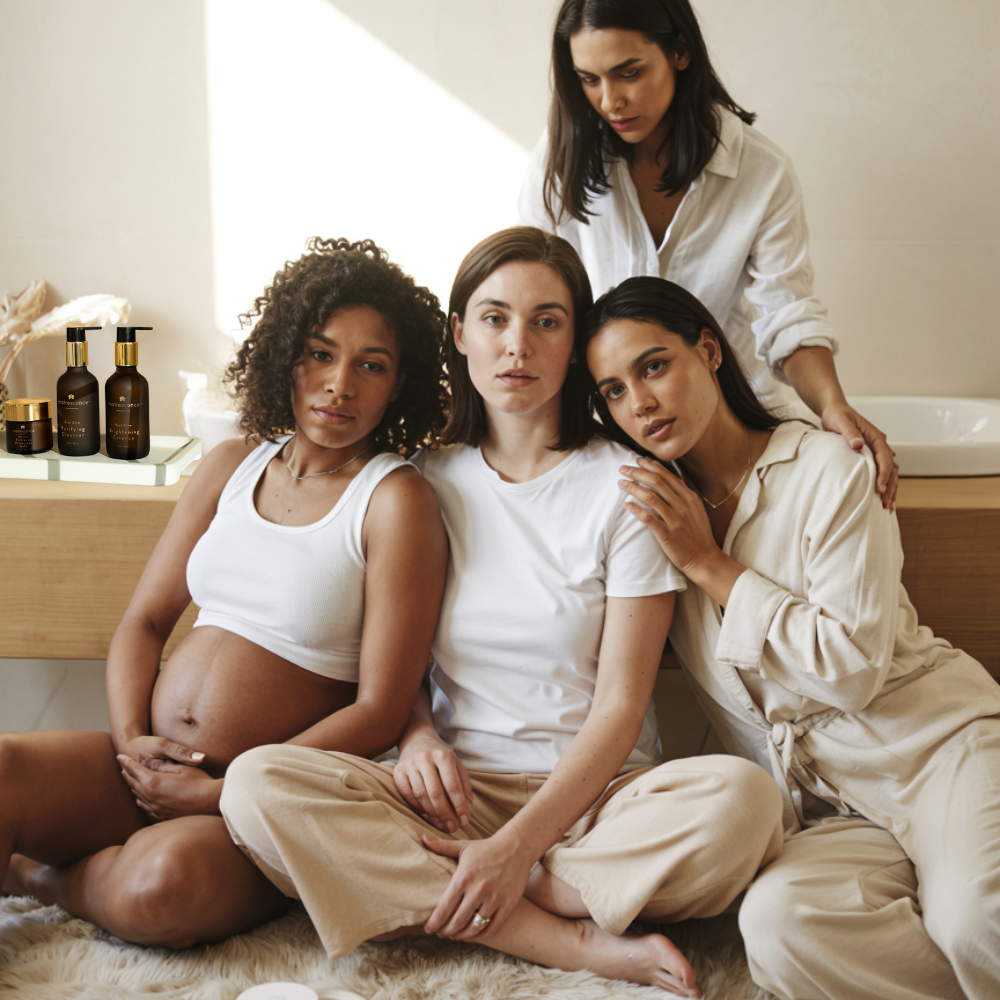
From PCOS to perimenopause, hormonal shifts happen at every life stage. Learn why hormone-safe skincare is a must—even if you’re not expecting.
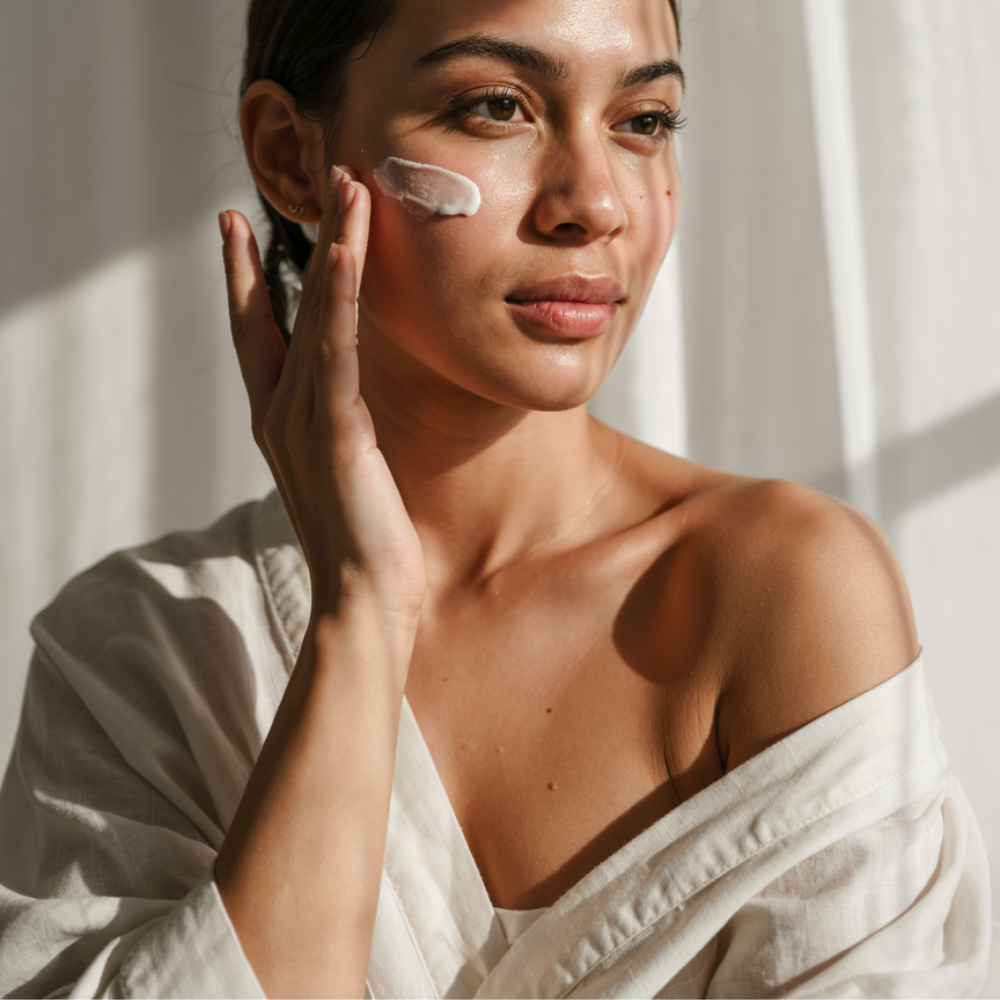
Why Your Skincare Should Be Hormone-Safe Becoming a mother transforms so many aspects of your life – including your skin. During pregnancy and postpartum, you might notice new breakouts, dark patch...
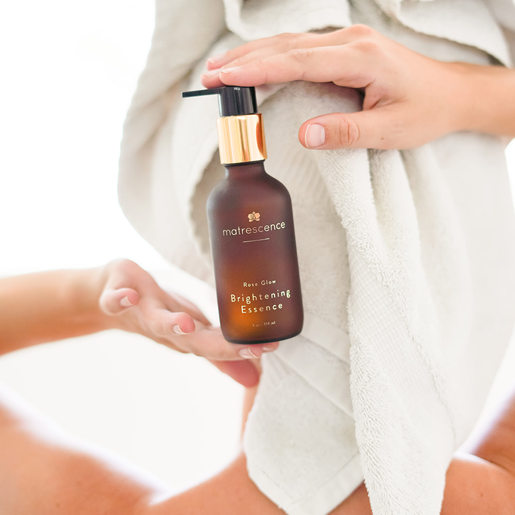
A deep-dive of our Brightening Essence. A dual-action toner and serum that gently exfoliates and hydrates to reveal a vibrant, more even complexion. Formulated for hormonally shifting skin, it help...



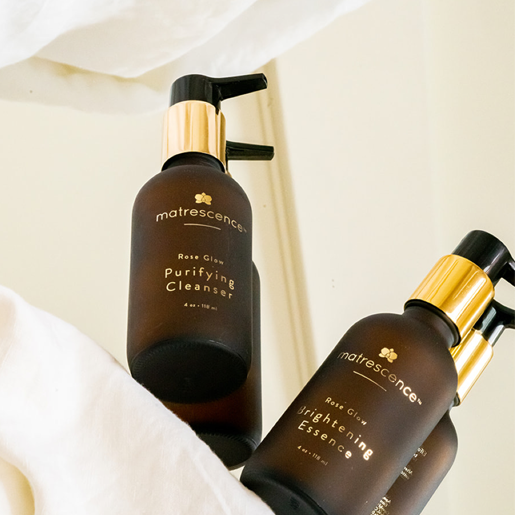

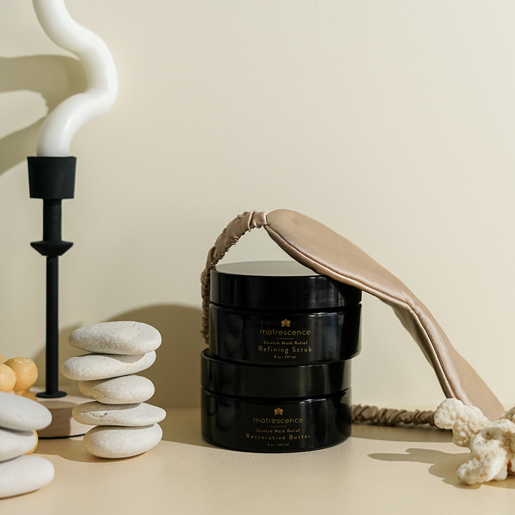
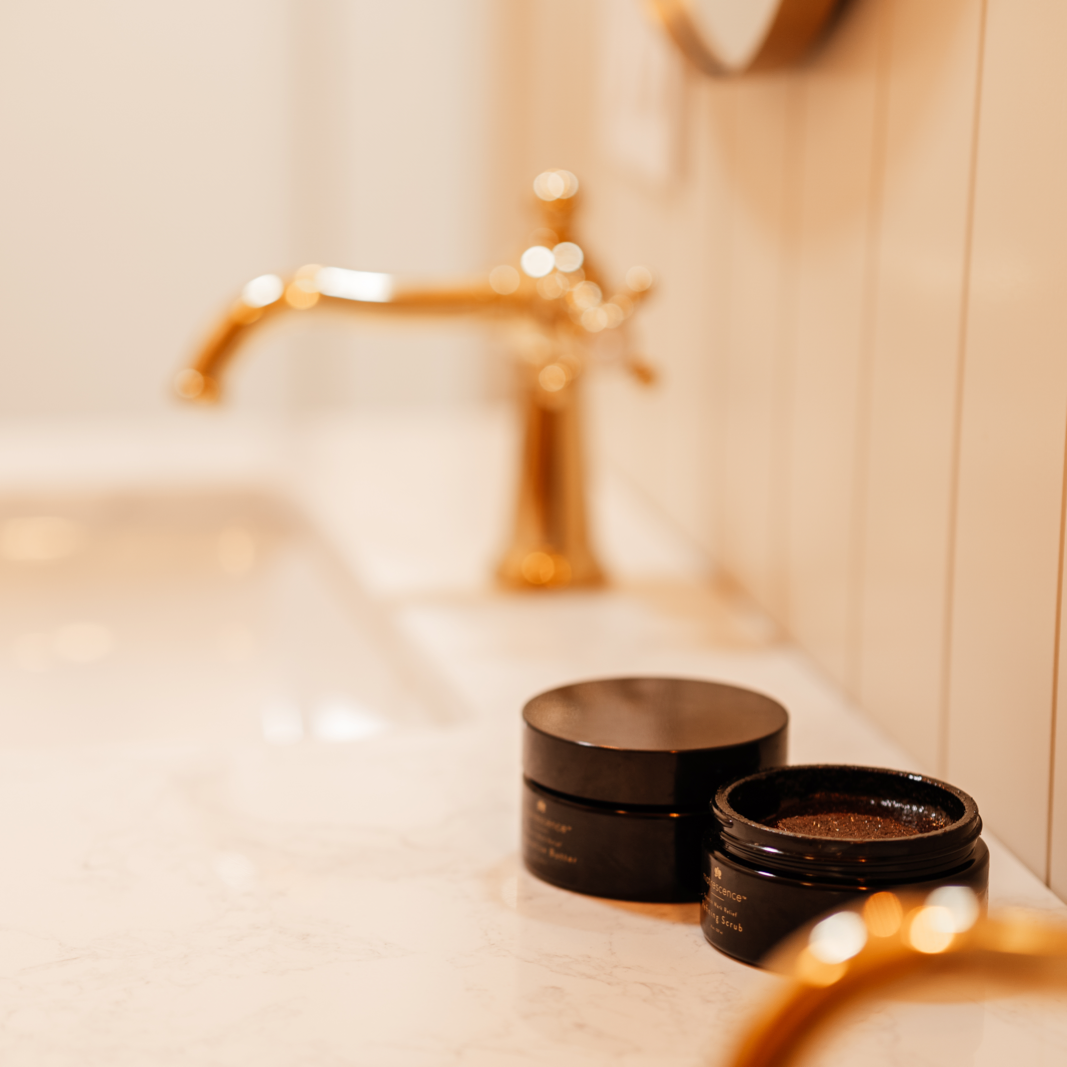

Leave a comment
All comments are moderated before being published.
This site is protected by hCaptcha and the hCaptcha Privacy Policy and Terms of Service apply.